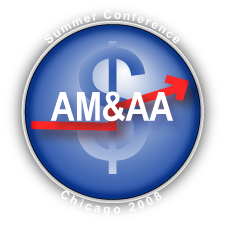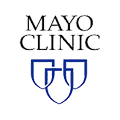How Social Networks Boost Market Efficiency for B2B Buyers and Sellers explains how to use LinkedIn to change the rules of business development
 Since the early 2000s, everyone has struggled to develop measurable economic models for social media and Web 2.0, mostly with little success. During 2007 and 2008, CSRA has worked with clients on several levels hammering out models to pass enterprise muster, and here I will briefly share one that shows considerable promise for its practicality and utility to businesses. The immediate context is B2B business development and sales, but it is applicable to numerous other enterprise processes as well. Since the early 2000s, everyone has struggled to develop measurable economic models for social media and Web 2.0, mostly with little success. During 2007 and 2008, CSRA has worked with clients on several levels hammering out models to pass enterprise muster, and here I will briefly share one that shows considerable promise for its practicality and utility to businesses. The immediate context is B2B business development and sales, but it is applicable to numerous other enterprise processes as well.
[…]
How to deal with technology disputes when your team gets into prolonged arguments over Web 2.0 tools, vendors or approaches. Taking a customer-centric approach to web 2.0 projects. Unleashing the power of the Web 2.0 conversation within your projects. […]
Companies must take an ecosystem-focused approach to website design in the Web 2.0 era; site-centric design is a relic of the past […]
Enterprise 2.0 and B2C Web 2.0 Show Serious Traction—But Social Sticky Wickets Remain—How to Trust?
 The Social Networking Conference (SNC) was an excellent place to check the pulse of Web 2.0 adoption from customer and provider perspectives. Producer Marc Lesnick explained in his opening remarks that, in the months preceding this conference, corporations had knocked on his door asking to get involved. His Ticonderoga Ventures had held several SNCs over the past few years, and it had been largely the purview of social networking start-ups and their facilitators. This is a very apt indication of the enterprise adoption predicted by my State of Social Networking Forrester coverage and 2007 Review. The Social Networking Conference (SNC) was an excellent place to check the pulse of Web 2.0 adoption from customer and provider perspectives. Producer Marc Lesnick explained in his opening remarks that, in the months preceding this conference, corporations had knocked on his door asking to get involved. His Ticonderoga Ventures had held several SNCs over the past few years, and it had been largely the purview of social networking start-ups and their facilitators. This is a very apt indication of the enterprise adoption predicted by my State of Social Networking Forrester coverage and 2007 Review.
SNC SF 2008 took place July 10-11, 2008 at the UC San Francisco’s Mission Bay Conference Center. It was a focused conference that balanced start-ups’ and enterprises’ innovation—with a dash of perspective from Apple co-founder Steve Wozniak and Social Networking Watch’s Mark Brooks. On the enterprise side, GE’s Grewal and GM’s Denison covered the enterprise 2.0 and B2C Web 2.0 perspectives respectively, while the U.S. Air Force’s Adkins presented nascent cross-boundary collaboration in […]
Web 2.0 and the Mergers and Acquisitions Industry at the AM&AA reveals how digital social networks are affecting mergers and acquisitions in the mid-market
Reports of “Character Building” Market—Significant Parallels with High Tech Bust—Plus, the Emerging Web 2.0 Vein
 The sub-prime induced correction of the U.S. financial sector has changed the context around M&A during the last year, and mergers and acquisitions experts met last week to share success stories, lessons learned and admonitions at the Alliance of Mergers & Acquisition Advisors Summer Conference July 22-25, 2008 at Chicago’s Wyndham Hotel. I was asked to present a new talk, “Leveraging a Web 2.0 Ecosystem to Grow Your Business,” and I had the opportunity to attend some of the other sessions. I’ll summarize their key points before adding some thoughts on the promise that Web 2.0 and social networks bring to deal marketing due to significantly decreased transaction costs. The sub-prime induced correction of the U.S. financial sector has changed the context around M&A during the last year, and mergers and acquisitions experts met last week to share success stories, lessons learned and admonitions at the Alliance of Mergers & Acquisition Advisors Summer Conference July 22-25, 2008 at Chicago’s Wyndham Hotel. I was asked to present a new talk, “Leveraging a Web 2.0 Ecosystem to Grow Your Business,” and I had the opportunity to attend some of the other sessions. I’ll summarize their key points before adding some thoughts on the promise that Web 2.0 and social networks bring to deal marketing due to significantly decreased transaction costs.
AM&AA members hail from all parts of a rich ecosystem of investment bankers, attorneys, private equity, brokers, intermediaries, CPAs and others who specialize in every […]
Reexamining “Content” in Light of “Conversation”
 Web 2.0 is redefining content on the Web, and Duo Consulting’s and Content Wrangler’s Web Content 2008 Chicago, convened at the UBS Tower on June 17-18, 2008, was a rich opportunity to check in with the Web 1.0-Web 2.0 mashup. Embedded within the legacy concept of “content” (text, pictures, audio, video, etc.) is that few people create it and many people consume it, which is obviously less true with every passing month. Web 2.0 is redefining content on the Web, and Duo Consulting’s and Content Wrangler’s Web Content 2008 Chicago, convened at the UBS Tower on June 17-18, 2008, was a rich opportunity to check in with the Web 1.0-Web 2.0 mashup. Embedded within the legacy concept of “content” (text, pictures, audio, video, etc.) is that few people create it and many people consume it, which is obviously less true with every passing month.
Something else is happening on the way to the forum, too: opinions about content are gaining more attention than the content itself, according to Day One keynote Dick Costolo. If so, where does that leave people who “manage” content? There is a whole ecosystem of professionals and vendors that manage content according to Web 1.0 rules, and many of them were here, sharing their visions and tactics for embracing Web 2.0. Day Two keynote Jerome Nadel provided a clue: a shift in emphasis to design: since “users” are creating the opinion content through their “conversation,” I’ll hazard that a key part of […]
How a “Facebook for Health Conditions” Is Redefining Privacy and Collaboration
 Healthcare systems worldwide are criticized for falling short of expectations, and countries like the U.S., which feature aging populations, are rapidly approaching a crisis. Demand and cost will grow, but the system as currently structured will certainly break down unless radical changes are made. Web 2.0’s disruptive potential can be part of the remedy: we need to introduce much more accountability and collaboration into all parts of the system. We need to change the paternalistic attitudes that pervade the system, treat patients as active participants and encourage everyone to be more accountable. This series introduces healthcare Web 2.0 innovators. Healthcare systems worldwide are criticized for falling short of expectations, and countries like the U.S., which feature aging populations, are rapidly approaching a crisis. Demand and cost will grow, but the system as currently structured will certainly break down unless radical changes are made. Web 2.0’s disruptive potential can be part of the remedy: we need to introduce much more accountability and collaboration into all parts of the system. We need to change the paternalistic attitudes that pervade the system, treat patients as active participants and encourage everyone to be more accountable. This series introduces healthcare Web 2.0 innovators.
Business Drivers
PatientsLikeMe is a digital social network where patients of chronic, life-changing diseases share detailed quantifiable information about themselves, their diseases and their treatments’ effectiveness. The goal of the site is to improve quality of life by sharing information.
[…]
New Life Sciences Accelerator Leverages Digital Social Network, Inspired by LinkedIn and Facebook
 Healthcare systems worldwide are criticized for falling short of expectations, and countries like the U.S. which feature aging populations, are rapidly approaching a crisis. Demand and cost will grow, but the system as currently structured will certainly break down unless radical changes are made. Web 2.0’s disruptive potential can be part of the remedy: we need to introduce much more accountability and collaboration into all parts of the system. We need to change the paternalistic attitudes that pervade the system, treat patients as active participants and encourage everyone to be more accountable. This series introduces healthcare Web 2.0 innovators. Healthcare systems worldwide are criticized for falling short of expectations, and countries like the U.S. which feature aging populations, are rapidly approaching a crisis. Demand and cost will grow, but the system as currently structured will certainly break down unless radical changes are made. Web 2.0’s disruptive potential can be part of the remedy: we need to introduce much more accountability and collaboration into all parts of the system. We need to change the paternalistic attitudes that pervade the system, treat patients as active participants and encourage everyone to be more accountable. This series introduces healthcare Web 2.0 innovators.
[…]
U.S. Physicians Learn the Power of Professional Crowdsourcing—Consult Each Other in Digital Social Network  Healthcare systems worldwide are criticized for falling short of expectations, and countries like the U.S. which feature aging populations, are rapidly approaching a crisis. Demand and cost will grow, but the system as currently structured will certainly break down unless radical changes are made. Web 2.0’s disruptive potential can be part of the remedy: we need to introduce much more accountability and collaboration into all parts of the system. We need to change the paternalistic attitudes that pervade the system, treat patients as active participants and encourage everyone to be more accountable. This series introduces healthcare Web 2.0 innovators. Healthcare systems worldwide are criticized for falling short of expectations, and countries like the U.S. which feature aging populations, are rapidly approaching a crisis. Demand and cost will grow, but the system as currently structured will certainly break down unless radical changes are made. Web 2.0’s disruptive potential can be part of the remedy: we need to introduce much more accountability and collaboration into all parts of the system. We need to change the paternalistic attitudes that pervade the system, treat patients as active participants and encourage everyone to be more accountable. This series introduces healthcare Web 2.0 innovators.
Business Drivers
Sermo is a start-up that was founded by a doctor with a passion, to create a professional community in which often-isolated U.S. doctors can advise each other. Once confirmed as practicing physicians, members create pseudonyms that are attached to their specialties. No other information about members is required, but they can volunteer other information about themselves.
The Sermo story reflects the limitless applicability of Web 2.0 collaboration, in […]
Renowned Health Center Lets Patients and Employees Share Experiences in Facebook—Podcasts, a New Way to Leverage Multimedia
 Healthcare systems worldwide are criticized for falling short of expectations, and countries like the U.S. which feature aging populations, are rapidly approaching a crisis. Demand and cost will grow, but the system as currently structured will certainly break down unless radical changes are made. Web 2.0’s disruptive potential can be part of the remedy: we need to introduce much more accountability and collaboration into all parts of the system. We need to change the paternalistic attitudes that pervade the system, treat patients as active participants and encourage everyone to be more accountable. This series introduces healthcare Web 2.0 innovators. Healthcare systems worldwide are criticized for falling short of expectations, and countries like the U.S. which feature aging populations, are rapidly approaching a crisis. Demand and cost will grow, but the system as currently structured will certainly break down unless radical changes are made. Web 2.0’s disruptive potential can be part of the remedy: we need to introduce much more accountability and collaboration into all parts of the system. We need to change the paternalistic attitudes that pervade the system, treat patients as active participants and encourage everyone to be more accountable. This series introduces healthcare Web 2.0 innovators.
Business Drivers
Mayo Clinic is literally a pioneer in that it was founded on the U.S. frontier in the 19th century. The world-renowned medical center has innovated many of the practices that evolved into the modern medical practice. It became organized as a nonprofit in 1919 and, as the Mayo Foundation, it has played a lead role in supporting medical education at the University of Minnesota Graduate School.
It may be natural, then, that Mayo […]
|
|
 Since the early 2000s, everyone has struggled to develop measurable economic models for social media and Web 2.0, mostly with little success. During 2007 and 2008, CSRA has worked with clients on several levels hammering out models to pass enterprise muster, and here I will briefly share one that shows considerable promise for its practicality and utility to businesses. The immediate context is B2B business development and sales, but it is applicable to numerous other enterprise processes as well.
Since the early 2000s, everyone has struggled to develop measurable economic models for social media and Web 2.0, mostly with little success. During 2007 and 2008, CSRA has worked with clients on several levels hammering out models to pass enterprise muster, and here I will briefly share one that shows considerable promise for its practicality and utility to businesses. The immediate context is B2B business development and sales, but it is applicable to numerous other enterprise processes as well.
 The Social Networking Conference (SNC) was an excellent place to check the pulse of Web 2.0 adoption from customer and provider perspectives. Producer Marc Lesnick explained in his opening remarks that, in the months preceding this conference, corporations had knocked on his door asking to get involved. His Ticonderoga Ventures had held several SNCs over the past few years, and it had been largely the purview of social networking start-ups and their facilitators. This is a very apt indication of the enterprise adoption predicted by my State of Social Networking Forrester coverage and 2007 Review.
The Social Networking Conference (SNC) was an excellent place to check the pulse of Web 2.0 adoption from customer and provider perspectives. Producer Marc Lesnick explained in his opening remarks that, in the months preceding this conference, corporations had knocked on his door asking to get involved. His Ticonderoga Ventures had held several SNCs over the past few years, and it had been largely the purview of social networking start-ups and their facilitators. This is a very apt indication of the enterprise adoption predicted by my State of Social Networking Forrester coverage and 2007 Review. The sub-prime induced correction of the U.S. financial sector has changed the context around M&A during the last year, and mergers and acquisitions experts met last week to share success stories, lessons learned and admonitions at the Alliance of Mergers & Acquisition Advisors Summer Conference July 22-25, 2008 at Chicago’s Wyndham Hotel. I was asked to present a new talk, “Leveraging a Web 2.0 Ecosystem to Grow Your Business,” and I had the opportunity to attend some of the other sessions. I’ll summarize their key points before adding some thoughts on the promise that Web 2.0 and social networks bring to deal marketing due to significantly decreased transaction costs.
The sub-prime induced correction of the U.S. financial sector has changed the context around M&A during the last year, and mergers and acquisitions experts met last week to share success stories, lessons learned and admonitions at the Alliance of Mergers & Acquisition Advisors Summer Conference July 22-25, 2008 at Chicago’s Wyndham Hotel. I was asked to present a new talk, “Leveraging a Web 2.0 Ecosystem to Grow Your Business,” and I had the opportunity to attend some of the other sessions. I’ll summarize their key points before adding some thoughts on the promise that Web 2.0 and social networks bring to deal marketing due to significantly decreased transaction costs. Web 2.0 is redefining content on the Web, and Duo Consulting’s and Content Wrangler’s Web Content 2008 Chicago, convened at the UBS Tower on June 17-18, 2008, was a rich opportunity to check in with the Web 1.0-Web 2.0 mashup. Embedded within the legacy concept of “content” (text, pictures, audio, video, etc.) is that few people create it and many people consume it, which is obviously less true with every passing month.
Web 2.0 is redefining content on the Web, and Duo Consulting’s and Content Wrangler’s Web Content 2008 Chicago, convened at the UBS Tower on June 17-18, 2008, was a rich opportunity to check in with the Web 1.0-Web 2.0 mashup. Embedded within the legacy concept of “content” (text, pictures, audio, video, etc.) is that few people create it and many people consume it, which is obviously less true with every passing month. Healthcare systems worldwide are criticized for falling short of expectations, and countries like the U.S. which feature aging populations, are rapidly approaching a crisis. Demand and cost will grow, but the system as currently structured will certainly break down unless radical changes are made. Web 2.0’s disruptive potential can be part of the remedy: we need to introduce much more accountability and collaboration into all parts of the system. We need to change the paternalistic attitudes that pervade the system, treat patients as active participants and encourage everyone to be more accountable. This series introduces healthcare Web 2.0 innovators.
Healthcare systems worldwide are criticized for falling short of expectations, and countries like the U.S. which feature aging populations, are rapidly approaching a crisis. Demand and cost will grow, but the system as currently structured will certainly break down unless radical changes are made. Web 2.0’s disruptive potential can be part of the remedy: we need to introduce much more accountability and collaboration into all parts of the system. We need to change the paternalistic attitudes that pervade the system, treat patients as active participants and encourage everyone to be more accountable. This series introduces healthcare Web 2.0 innovators. Healthcare systems worldwide are criticized for falling short of expectations, and countries like the U.S. which feature aging populations, are rapidly approaching a crisis. Demand and cost will grow, but the system as currently structured will certainly break down unless radical changes are made. Web 2.0’s disruptive potential can be part of the remedy: we need to introduce much more accountability and collaboration into all parts of the system. We need to change the paternalistic attitudes that pervade the system, treat patients as active participants and encourage everyone to be more accountable. This series introduces healthcare Web 2.0 innovators.
Healthcare systems worldwide are criticized for falling short of expectations, and countries like the U.S. which feature aging populations, are rapidly approaching a crisis. Demand and cost will grow, but the system as currently structured will certainly break down unless radical changes are made. Web 2.0’s disruptive potential can be part of the remedy: we need to introduce much more accountability and collaboration into all parts of the system. We need to change the paternalistic attitudes that pervade the system, treat patients as active participants and encourage everyone to be more accountable. This series introduces healthcare Web 2.0 innovators.